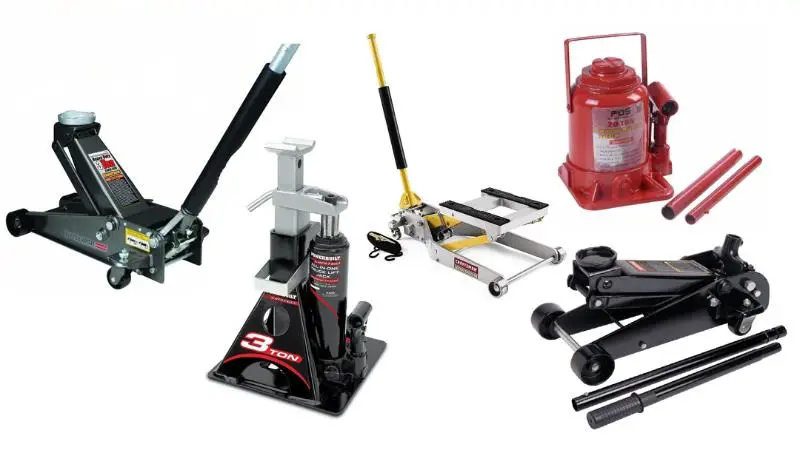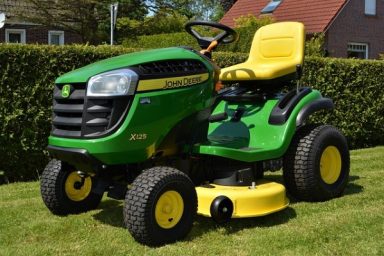In the world of vehicle jacks, there are many different types to choose from, and not every jack is the appropriate fit for every automobile.
For you to choose the safest choice for raising your vehicle, you must understand how the measurement, form, and jack points on your car or cart influence the jacking process.
In short: Can I Use a 2 Ton Jack on an SUV?
Yes, You Can. Since you only raise half of the vehicle, you may use a 2 Ton Jack on an SUV as long as it weighs less than 4 tons or 8000 pounds. However, for the sake of safety, I would suggest that you purchase a 4-ton jack for your midrange or full-size SUV instead.
Examine the following suggestions for determining which jack is the appropriate fit for your requirements.
Table of Contents
WHAT IS THE WEIGHT OF YOUR CAR?
A rate for each vehicle jack type is assigned to handle weight variety aright, and the proper measure is shown on the jack itself in the form of a seen label.
It’s vital to remember that you won’t be building the whole vehicle with a particular jack, so you won’t require a jack that’s considered for the entire mass of your car or pickup truck.
A two-ton jack will be enough for lifting a corner on the majority of sedans and small cars. A pickup truck or SUV may require multiplying that rating by 4 tons to equip you with a significant safety boundary.
WHERE DOES EVERYTHING MATCH?

To put a car, the two most prevalent classes of car jacks are flat jacks and container jacks, both of which rely on water-pumping fluid as their lifting medium.
Unlike container jacks, which appear like their namesake and stand upright, floor jacks have a minor step, with the handle sliding in quickly alongside the raising arm. Flat jacks have a broader effort, with the holder at the whole end and the lifting pad at the other.
Using any of these jacks is sufficient for finding cures, and since they are available in a range of sizes, you should be able to locate one that will fit beneath your vehicle’s jacking points, which should be specified in your owner’s handbook.
The usage of container jacks is ideal if the lift points are located directly or closer to the edge of the car. In contrast, flat jacks provide greater reach beneath the car and are available in low-profile versions that are helpful if your suspension is located close to the ground.
Whether you drive a truck or an SUV, Car manufacture may have sent your car to you with a bumpers jack. Longer jacks that attach to the underside of your car’s bumpers are what we’re talking about here. Although they are not sturdy, they may well help change a car tire in an emergency and should not be used for anything major engine work.
A sturdy piece of metal, a jack stands.
When you’ve decided on the carjack you want to use, you’ll need to couple it with one or more jack stands again when the vehicle has been lifted into the air.
Maintaining your vehicle when jacks only lift it is dangerous and may cause severe injury if the jack fails unexpectedly. Heavy steel stabilizers that fit in alongside your jack to transfer a load of your vehicle (according to their total capacity, of course), enabling you to detach the jacks and work securely without removing the jack directly.
Even though autos are large and heavy, they are not inherently hazardous. With some measures, you may replace tires, check the underside, or conduct repair work in a controlled way.
Car JACK Frequently Asked Questions
Can I use a 2-ton jack on a 3-ton car?
Indeed, Yes, in fact, When it comes to flat jacks, the rule is that they must be certified for at least 3 of the car’s overall mass.
How much can a 2-ton jack stand hold?
Jack’s platforms can support significantly more capacity than the manufactures’ specifications indicate. The 4-ton jack stand with a 2-ton rating can sustain 12,300 kilograms or just over 6 kilograms of pressure without slowly collapsing if there is no safety pin in the center.
What is better, a floor jack or bottle jack?
Despite this, bottle jacks do not have the same structural stability level as floor jacks, owing to their thin frame. Floor jacks are a more durable option for difficult procedures. Bottle jacks also have a minimal lifting length, which may be problematic when dealing with vehicles that have a standardized level.






